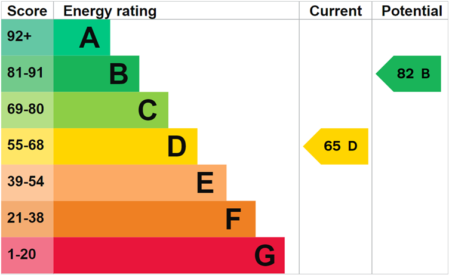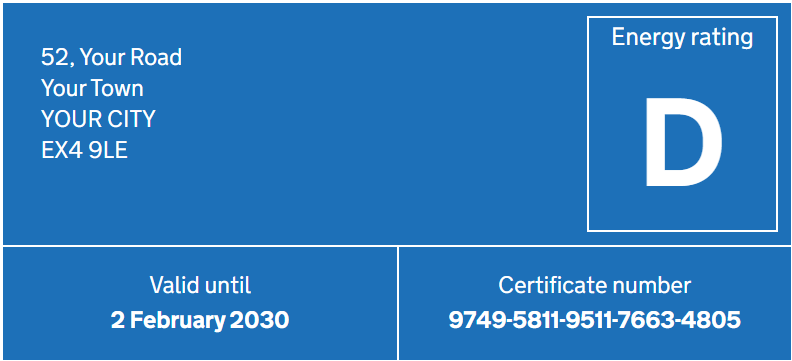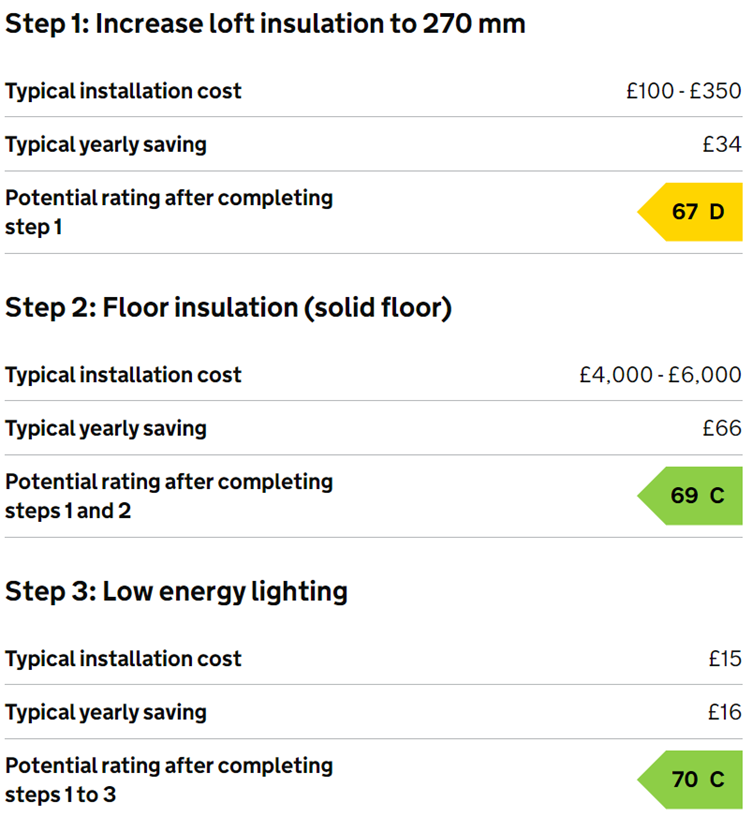Your EPC Rating: What it is, What it Means & How to Improve it

In this article, we’ll discuss EPC ratings. We’ll help you understand what they are, how to find the EPC rating for your home, how to read it, and how to improve your homes energy rating.
What Does ‘EPC Rating’ Mean?
EPC stands for ‘Energy Performance Certificate’.
An EPC rating is a measure of a property’s energy efficiency. Graded from A (most efficient) to G (least efficient) your EPC rating isn’t just a label. It’s a reflection of how energy-efficient your property is. Your EPC certificate will also;
- Include areas to improve in the most cost-effective way, and
- Tell you the potential rating your property could have
The EPC rating of your home or property impacts both your wallet and the environment. Understanding your EPC rating is essential for making informed decisions about energy use and improvements.
What is My EPC Rating?
To check your EPC rating, all you need to do is go to the EPC Register:
https://find-energy-certificate.digital.communities.gov.uk/find-a-certificate/search-by-postcode
The EPC Register will show you a full breakdown on your property for free.
What’s Included in My EPC Rating?
When you look at your EPC certificate, you’ll see along the left-hand side the contents of what is included.
Rules On Letting this Property
This part tells you if you are able to rent or let your property based on its EPC rating.
Energy Rating and Score

This shows;
- The energy rating of your property on a coloured scale, as well as
- The potential rating on the same scale.
In our example, the property has an EPC rating of D with a potential rating of a B.
Breakdown of Property’s Energy Performance
The next section is the breakdown of the property’s energy performance. This is the part where they go over how they got to the above rating.
The table shows the wall and roof insulation, window quality, heating and controls, water heating, lighting, floor insulation and secondary heating. They are all assessed and rated on either very good, good, average, poor or very poor.
How This Affects Your Energy Bills
This part shows you the estimated yearly energy costs for the property. As an example, ours states £809 per year. If we follow the advice, we can potentially save of £146 per year.
Most certificates have the disclaimer;
‘The estimated cost shows how much the average household would spend in this property for heating, lighting and hot water’. It is not based on how energy is used by the people living at the property.
The estimated saving is based on making all of the recommendations in how to improve this property’s energy performance.’’
The next part under this section shows how much energy you’ll need per year for heating and hot water.
Environmental Impact of this Property
This tells you;
- How many tonnes of CO2 your property produces per year
- What the average household produces, and
- The potential production for this property
This section also has a disclaimer that if you make the recommended changes, you could reduce emissions by x amount per year.
Changes You Could Make to Improve The Property’s Energy Performance

This shows the assessors comments on how you can improve your overall rating.
On the example that we used, our potential rating is a B. But how can we achieve this?
The assessor’s advice includes getting floor installation. It then shows the typically installation costs, in this case it’s £4,000 – £6,000 with a typical yearly saving of £39. Then it will show what your rating will be after making these changes.
Another recommendation is to get solar water heating. Again it shows typical installation costs of £4,000 – £6,000 and a typical yearly saving of £36.
Who to Contact About Your Energy Certificate
Last, the certificate shows you who the assessor is and their contact details. If you have any issues, comments or queries about your EPC certificate, you can contact them.
What is a Good EPC Rating?
EPC ratings are assessed using the government’s Standard Assessment Procedure (SAP). They are banded from A (the most efficient) to G (the least efficient). The higher closer your rating is to A the better it is, the closer to G, the worse it is.
The better the EPC rating;
- The more you’ll save on energy bills, and
- The lower your environmental impact will be
New build homes have higher EPC ratings than existing homes might have a lower rating of D or E.
However, according to GOV.uk, the average EPC rating for a dwelling in England and Wales is Band D (rating 60).
How to Improve Your EPC Rating
Your EPC certificate will tell you how you can improve the energy efficiency of your property or home.
That said, there are a number of things you can do to make your home more energy efficient. Some don’t cost a lot of money; others can be expensive.
We’ll start with the cheapest first;
- Replace your light bulbs for energy efficient LED bulbs – this is the quickest, easiest and cheapest way to improve your EPC rating.
- Increase loft insulation to 270mm – uninsulated houses lose on average 33% of their heat through the roof. Adding 270mm insulation can improve your homes’ energy efficiency and EPC rating.
- Install or renew wall insulation – another effective way of improving a property’s energy rating. Both on newer cavity walls and older solid walls.
- Install infrared heaters – The Standard Assessment Procedure used for calculating EPC rating favours infrared heaters for improving energy ratings.
- Upgrade or replace your boiler – An inefficient boiler can ruin your EPC rating. On the other hand, an efficient boiler can improve it significantly.
- Upgrade to double or triple-glazed windows – a house can lose up to 18% of its heat its windows. Single-glazed windows lose heat twice as fast as double-glazed. Triple-glazed windows are up to 40% more thermally efficient than double-glazed.
- Install floor insultation – 10% – 20% of a houses heat is lost through the floor. New build homes have to have floor insulation, however, many older homes don’t.
- Install renewable energy systems – like solar panels or ground-source heat pumps.


